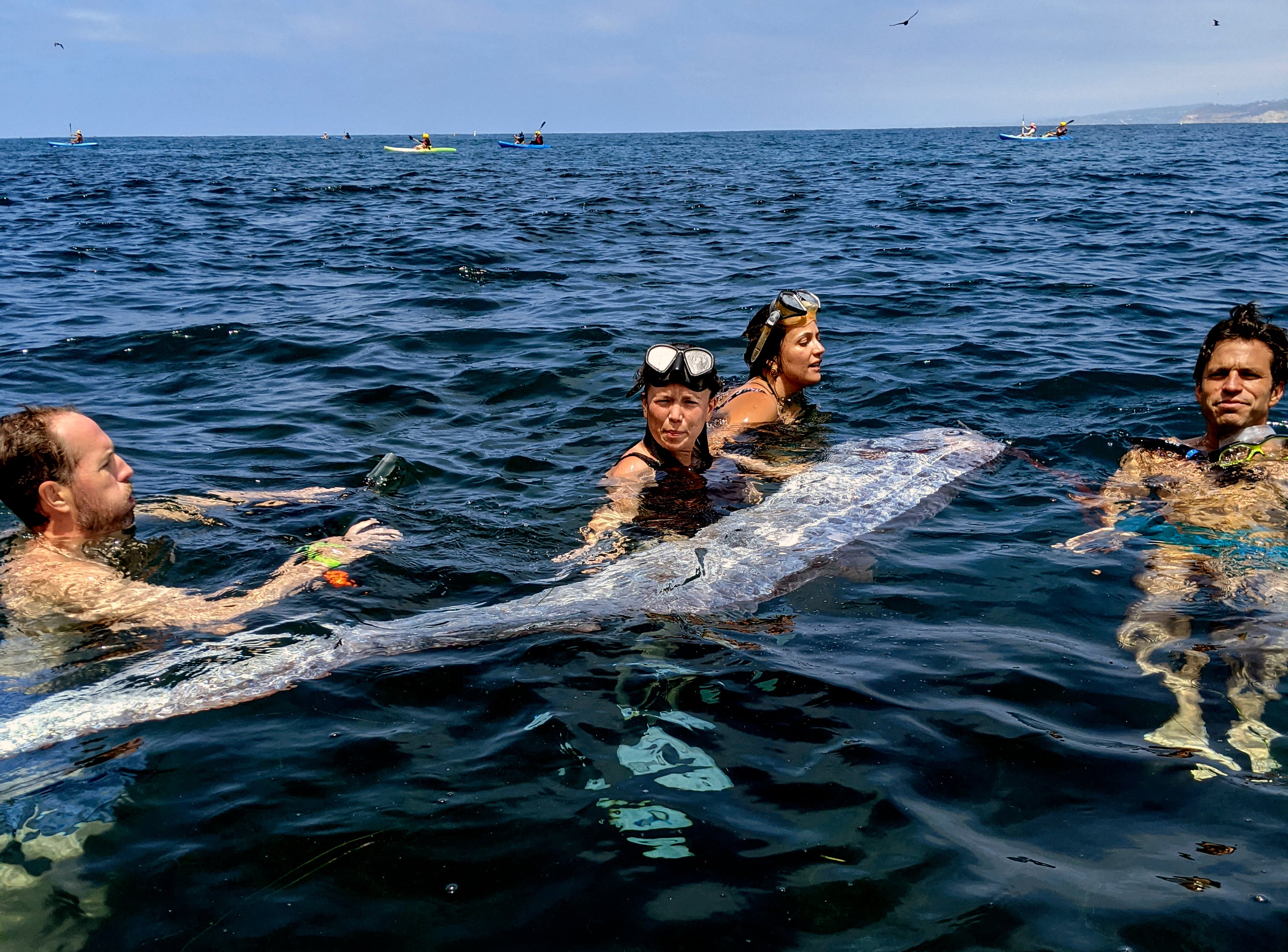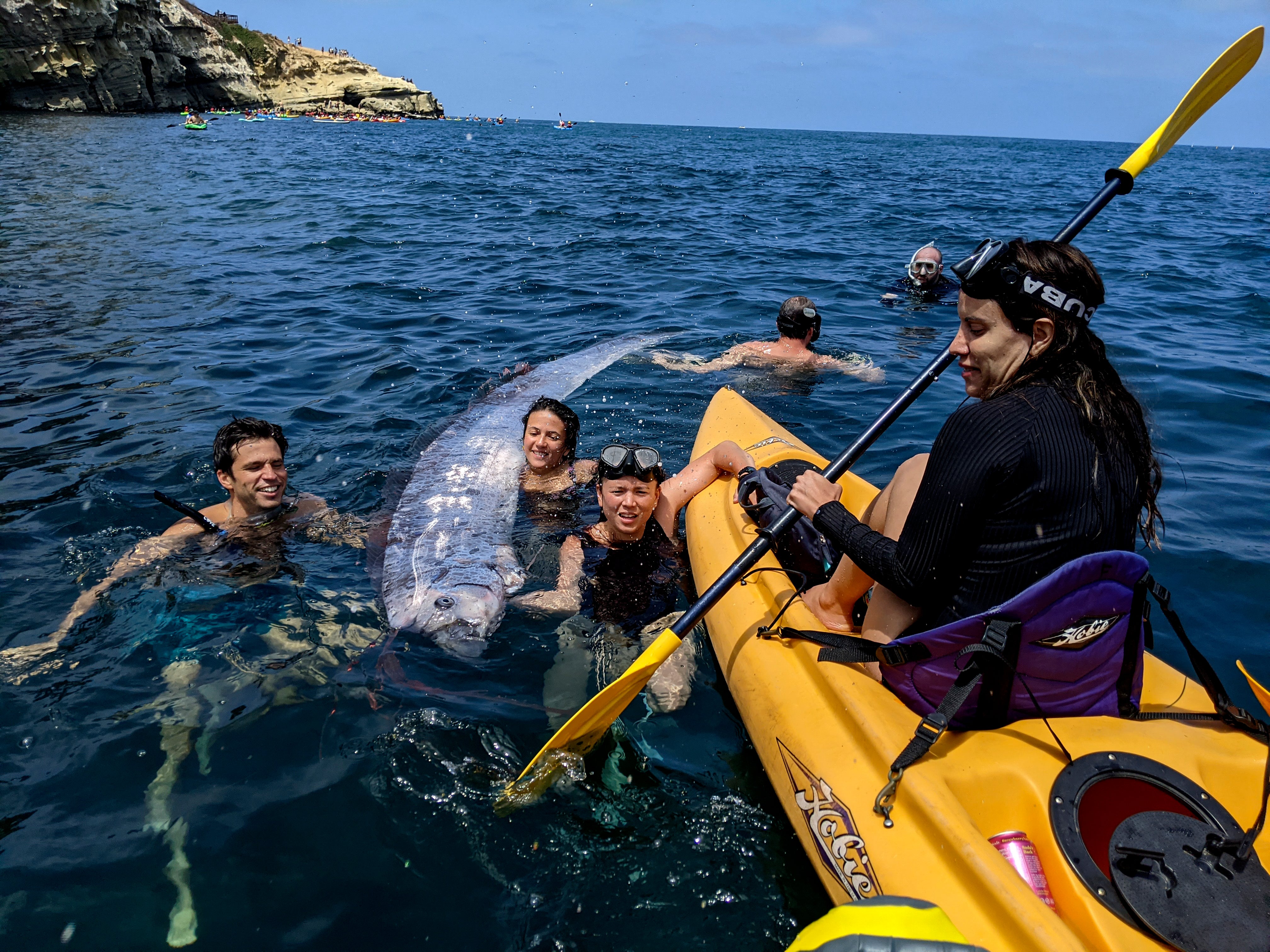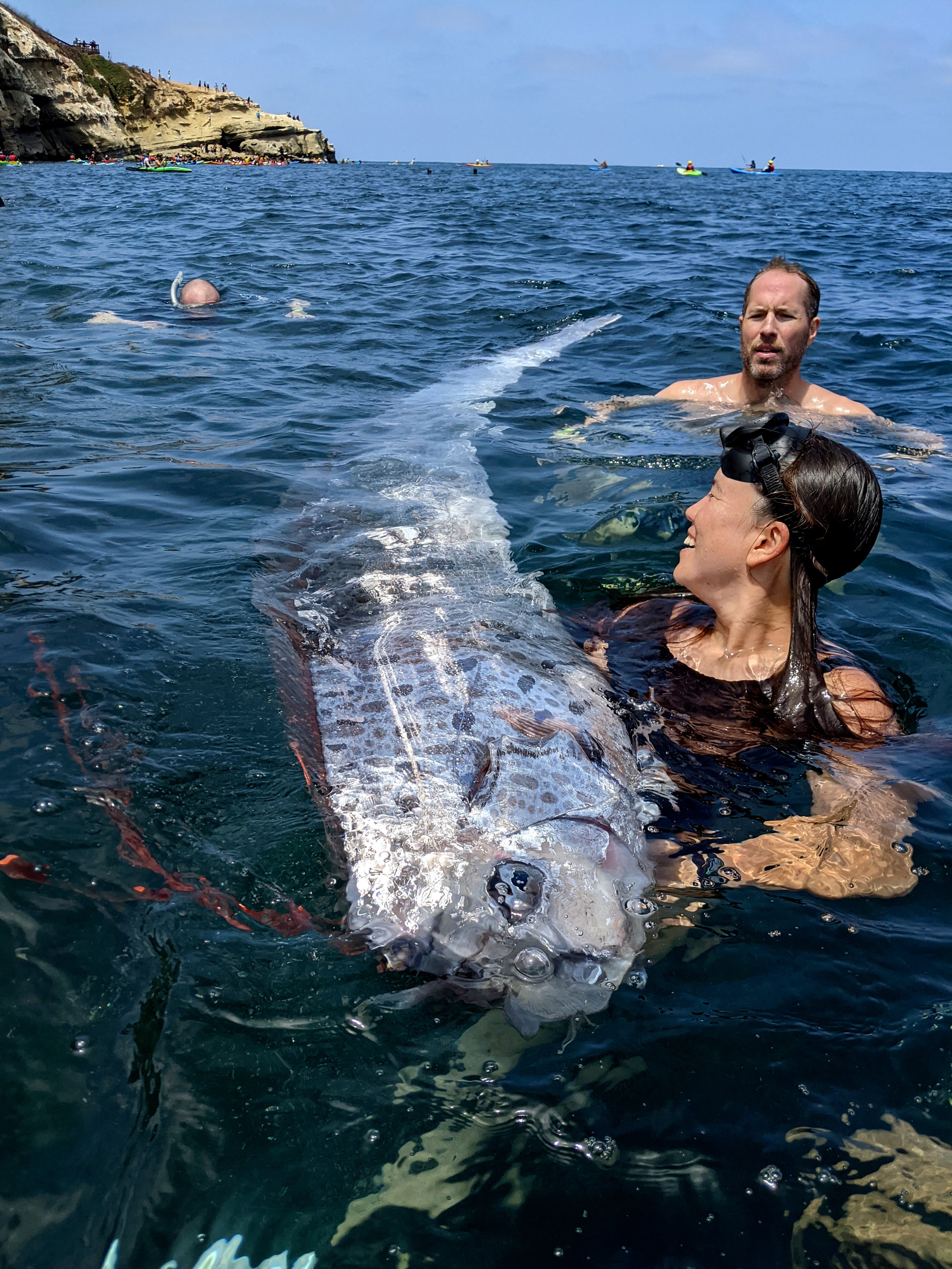Scientists stumped as rare deep sea ‘doomsday serpent’ found in California
The fish have a mythical reputation as predictors of natural disasters or earthquakes

Your support helps us to tell the story
From reproductive rights to climate change to Big Tech, The Independent is on the ground when the story is developing. Whether it's investigating the financials of Elon Musk's pro-Trump PAC or producing our latest documentary, 'The A Word', which shines a light on the American women fighting for reproductive rights, we know how important it is to parse out the facts from the messaging.
At such a critical moment in US history, we need reporters on the ground. Your donation allows us to keep sending journalists to speak to both sides of the story.
The Independent is trusted by Americans across the entire political spectrum. And unlike many other quality news outlets, we choose not to lock Americans out of our reporting and analysis with paywalls. We believe quality journalism should be available to everyone, paid for by those who can afford it.
Your support makes all the difference.A rarely seen mystery deep sea fish found floating on the ocean surface off the San Diegocoast has stumped scientists.
The creature that resembles a serpent was brought ashore for study, marine experts said.
The silvery, 12-foot-long (3.6-meter) oarfish was found last weekend by a group of snorkelers and kayakers in La Jolla Cove, north of downtown San Diego, the Scripps Institution of Oceanography said in a statement.

It's only the 20th time an oarfish is known to have washed up in California since 1901, according to institution fish expert Ben Frable.
Scripps noted that oarfish, sometimes known as doomsday fish, have a mythical reputation as predictors of natural disasters or earthquakes, although no correlation has been proven.
Oarfish can grow longer than 20 feet (6 meters) and normally live in a deep part of the ocean called the mesopelagic zone, where light cannot reach, according to the National Oceanic and Atmospheric Administration.

Swimmers brought the La Jolla Cove oarfish to shore atop a paddleboard. It was then transferred to the bed of a pickup truck.
Scientists from NOAA Southwest Fisheries Science Center and Scripps planned a necropsy on Friday to try to determine the cause of death.
In 2013, when two oarfish washed up onto Californian beaches, scientists said they may have died a result of seismic activity under the seabed that occurs days or weeks before an earthquake.

Rachel Grant, a lecturer in animal biology at Anglia Ruskin University in Cambridge, said at the thime that there might be some truth in the ancient Japanese legend that the appearance of oarfish precedes an earthquake.
“It’s theoretically possible because when an earthquake occurs there can be a build-up of pressure in the rocks which can lead to electrostatic charges that cause electrically-charged ions to be released into the water,” Dr Grant said.
“This can lead to the formation of hydrogen peroxide, which is a toxic compound. The charged ions can also oxidise organic matter which could either kill the fish or force them to leave the deep ocean and rise to the surface,” she said.
Another possibility is that prior to an earthquake there is a release of large quantities of carbon monoxide gas, which could also affect oarfish and other deep-see creatures, Dr Grant said.
“The geophysical processes behind these kinds of sighting can happen before an earthquake. I will be watching California closely over the next couple of weeks,” she added.